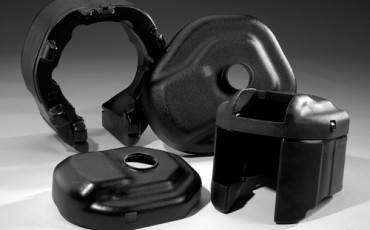
Rotational molding and injection molding can both use molded-in inserts that support the use of hardware such as hinges, fasteners, and handles. Applications included plastic tanks, electronic housings, and instrument enclosures. With injection molding, high-pressure forces can cause molded-in inserts to break or deform. Rotational molding reduces the risk of these problems because it’s a low-pressure process. Yet designers still need to follow some basic guidelines.
Insert Molding in Rotational Molding
Molded-in inserts are threaded metal fasteners that are placed inside the mold cavity. Plastic is melted around the insert and locks it into place. Ideally, the metal insert absorbs heat from the cavity’s surface and conducts it along the insert’s entire length. For best results, the insert is shaped to provide undercuts into which the plastic material can flow. Often, molded-in inserts are dumbbell-shaped.
Molded-In Inserts and Rotomolding Materials
Rotational molding, or rotomolding as it’s also called, supports the use of molded-in inserts that are made of various materials. There are two basic requirements, however. First, the insert material must be chemically compatible with the plastic material that will be molded. Second, the insert must have adequate temperature resistance to resist deformation at molding temperatures.
Rotomolded Part Design and Molded-In Insert Sizes
Part designers need to choose molded-in insert sizes with dimensions in mind. That’s because when rotomolded parts cool, the plastic shrinks. This can cause the plastic to draw down tightly on the molded-in insert, which can cause stress cracking in the plastic part. Larger inserts are more prone to cracking than smaller inserts. Inserts with sharp edges can cause stress cracking, too.
Multiple Inserts for Rotomolded Parts
Rotomolded parts with multiple inserts raise special design considerations. As a rule, keep the distance between the inserts as small as possible. Otherwise, plastic shrinkage between widely-spaced inserts can cause high stress at the fitment between the insert and plastic. This condition can also complicate the removal of the finished plastic part from the mold cavity.
Choose Rotational Molding from Gregstrom
Do you have questions about molded-in inserts, or other aspects of rotational molding design? Would you like to learn more about rotational molding’s advantages over injection molding? Maybe you need more information about rotational molding materials, or the different types of molds that are used. If you’re a plastic part designer, design assistance and quality assurance can strengthen your plastics project.



